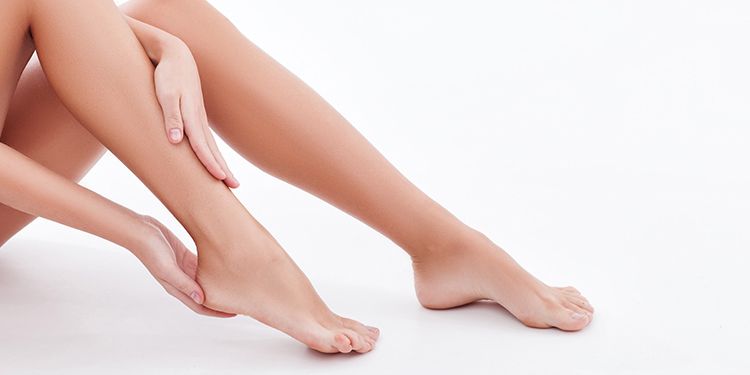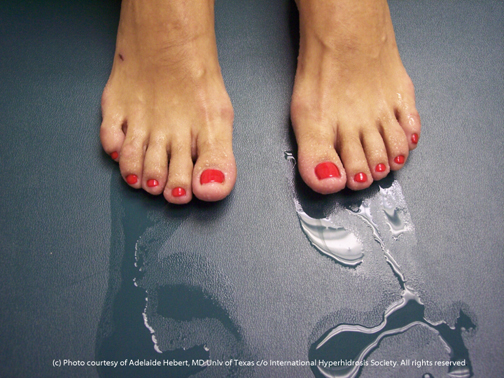Unveiling the Complexities of Excessive Sweating: A Comprehensive Guide to Diagnosis and Management
Extreme sweating, clinically recognized as hyperhidrosis, is a condition that affects a substantial number of individuals and can have an extensive impact on their quality of life. While sweating is a natural bodily function, its overactivity in hyperhidrosis provides an unique collection of obstacles that frequently go beyond simple pain.

Understanding Hyperhidrosis Causes
Hyperhidrosis causes can be connected to different elements such as genes, hormone imbalances, and specific clinical conditions. Genetics play a considerable duty in primary focal hyperhidrosis, where people acquire the problem from their household members. This kind of hyperhidrosis usually materializes in details areas like the palms, soles of the feet, underarms, and face. Hormone discrepancies, specifically an overactive thyroid gland or menopausal changes, can also trigger extreme sweating. In addition, specific medical problems such as diabetes, cardiovascular disease, and infections can cause second generalised hyperhidrosis. These underlying health and wellness problems can disrupt the body's all-natural air conditioning system, causing the sweat glands to become over active. Understanding the origin of hyperhidrosis is critical in identifying and efficiently managing this condition. By recognizing the particular aspects adding to extreme sweating, doctor can tailor therapy plans to attend to the underlying cause, providing relief and boosting the lifestyle for individuals affected by hyperhidrosis.
Recognizing Hyperhidrosis Manifestations

Moreover, hyperhidrosis symptoms might show up in emotional and social distress, as people might feel embarrassed or distressed regarding their sweating, leading to avoidance of social circumstances (Exessive Sweating). Additionally, duplicated episodes of extreme sweating can result in skin maceration, fungal infections, and a total decrease in self-worth
Diagnostic Process for Hyperhidrosis
Initiating the analysis process for extreme sweating entails comprehensive analysis of the individual's case history and checkup. Asking about the onset, period, and causes of sweating episodes is critical to separate between key focal hyperhidrosis and additional generalised hyperhidrosis. Case history should also include concerns regarding drugs, clinical problems, and family members history of hyperhidrosis.
Throughout the physical exam, certain focus is paid to the locations influenced site by sweating. The health care supplier might analyze the level of sweating, check for signs of underlying conditions, and evaluate the influence of sweating on the person's lifestyle. Furthermore, specific tests like the gravimetric test, starch-iodine examination, or skin conductance dimensions may be carried out to evaluate the quantity of sweat created.
Additionally, in instances where second hyperhidrosis is presumed, added examinations such as blood examinations, pee tests, and imaging studies may be advised to recognize the underlying source of excessive sweating. The analysis procedure aims to properly establish the type and root cause of hyperhidrosis to guide ideal management approaches.
Treatment Alternatives for Hyperhidrosis
When resolving too much sweating, different therapy choices are readily available to reduce signs and boost the person's quality of life. The treatment approach for hyperhidrosis depends upon the extent of symptoms and the individual's feedback to first treatments.
Topical treatments, such as aluminum-based antiperspirants, are often suggested as the initial line of protection for handling light situations of hyperhidrosis. These products function by connecting the sweat ducts, hence reducing the amount of sweat that gets to the skin's surface. For individuals with more serious signs, oral medicines like anticholinergics might be suggested to help lower sweating. These drugs can have side effects and are not ideal for every person.

Effective Monitoring Strategies
To successfully take care of hyperhidrosis, a personalized and comprehensive treatment strategy tailored to the person's certain needs and feedback to previous therapies is crucial. Iontophoresis, involving the usage of a reduced electric present to reduce sweat gland task, can be advantageous for both palmoplantar and axillary hyperhidrosis. A multidisciplinary strategy involving dermatologists, key treatment medical professionals, and, if necessary, specialists, can optimize the management of hyperhidrosis.
Verdict
In verdict, hyperhidrosis is a condition characterized by excessive sweating, which can substantially impact my company a person's this article high quality of life. With correct diagnosis and management methods, individuals enduring from hyperhidrosis can discover alleviation and boost their general health.
Too much sweating, clinically understood as hyperhidrosis, is a condition that impacts a significant number of individuals and can have a profound effect on their quality of life. By recognizing the particular elements adding to excessive sweating, medical care carriers can tailor treatment strategies to resolve the underlying cause, using alleviation and enhancing the high quality of life for individuals influenced by hyperhidrosis.
Hyperhidrosis, defined by excessive sweating beyond what is necessary for regulating body temperature, can considerably influence a person's high quality of life. Making inquiries concerning the beginning, period, and causes of sweating episodes is essential to set apart between main focal hyperhidrosis and secondary generalised hyperhidrosis. How to stop sweaty hands.In final thought, hyperhidrosis is a condition defined by too much sweating, which can considerably influence an individual's top quality of life